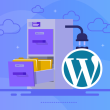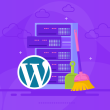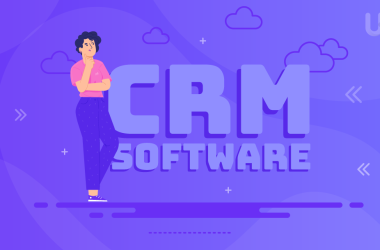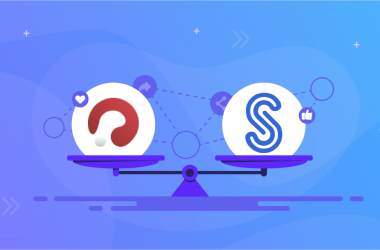Have trouble loading your website load in under a minute? Hearing frustrated viewers complain about your slow website? We have just the solutions for you!
Your website is the first impression of your company. It is important that you form a good first impression on all your viewers. A good website has to be fast, responsive, and accessible. To achieve this, you do not need to know the basics of web design and development.
According to top web designers in Canada, websites have to compete with each other for the user’s attention. In this competitive space, it is important to optimize your website and make it load as fast as possible. The performance of a website is a factor that has an impact on the success of any business. A slow-loading website will lead to a decrease in the number of visitors, and it can also affect conversion rates.
We have to admit that our websites are not as fast as they should be. The average loading time for a website was 2.6 seconds in 2017, and it’s getting worse by the day. Google observes that websites loading slower than 400ms get fewer clicks. 25% of internet users say they would abandon a website if it takes 4 seconds or longer to load.
Luckily, there are some things we can do to make our websites faster. In this article, we are going to talk about some easy ways to speed up your website for free. These tips will help you improve your website’s performance and get a higher ranking in search engine results.
High-Quality Web Hosting
An important factor in website speed is the hosting service provider. You should find a reliable provider that offers a high-quality server and affordable prices. Make sure that the hosting server is in a nearby location.
The closer the server, the faster your site will load for your visitors since the ping is faster and it will take less time for the viewer to access your site. Thankfully, you are in luck because UltaHost provides the fastest hosting with the most affordable prices out there. Check it out now!
Using a Content Delivery Network
The next step is to optimize your site for performance, which can be done by using a CDN (Content Delivery Network) for faster load times. What does a CDN do? A CDN stores copies of the original data on different servers worldwide and when the viewer wishes to access this data, they are provided the data from the server closest to them. This significantly decreases load times and the resources that your website requires to load completely.
Maximizing Accessibility
To start with, we should make sure that our website is accessible and compatible with all devices and browsers.
This means taking care of the optimizations and plugins to make sure they support all devices from smartphones and tablets to computers and laptops. We can also improve the loading speed by optimizing the landing page, reducing the number of plugins or scripts running on it, and hosting it on a server that is close to your target audience.
Optimizing Media
A website’s loading time is directly related to the number of visitors it gets. One of the few things that you can do to make your website load faster is to reduce the size of the images on your website.
Images are one of the biggest contributors to slow loading times. They take up a lot of space and can slow down your page load time by up to 50%. You should also try to keep an eye on how many images you have on a page because it can affect performance as well.
Plugin Management
Plugins and scripts require resources to run and can add to the time needed for your website to load completely. You should be aware that in order to improve your website’s performance you should reduce the number of plugins or scripts that are running at any given time.
You can do this by not using more than one plugin for the same task and to use lightweight plugins that can achieve multiple needs of your website. A good example of this is JetPack. Read our blog post on it here.
Limiting Advertisements
Most advertisements use some form of media. More often than not, that media is video which can hog quite a lot of resources apart from being intrusive and annoying for the viewer. The same logic applies here as that to pictures and videos. It is not feasible to completely eliminate them but it might be a good idea to limit them so that they use a minimum of resources.
Limiting External Services
External services refer to integrating different external add-ons or scripts e.g. Google Analytics, Twitter, Facebook etc. These utilities basically use the viewer’s resources to display external media and extensions.
This can be even more resource-intensive than displaying pictures or videos. Use Google Chrome DevTools and see the list of resources that your website loads. Identify the amount of data that these resources consume and try to remove or minimize the services that are using too many resources.
Cache Expiry
A web browser caches information so that when a user returns to the same website again, it does not have to load all of the information from scratch. This results in faster loading times. You can leverage this functionality by setting a long expiry date like a year or longer. This way, returning users to your websites will observe noticeably faster loading speeds.
Reduce Redirects
Redirecting is the act of taking a viewer from one website and moving them to another website without them having to type in the URL. Redirects require the redirection host page to load before the target page can be accessed. This means that the time taken to access one page is doubled and sometimes even tripled. Reduce the number of redirects to ensure your viewer lands directly on the target page.
Compression
Your website likely needs a large number of files to display all its contents. These may include files that use CSS, HTML, JavaScript, etc. You can compress these files using novelty tools to decrease their size so that they can be accessed faster by your hosting server. You should be careful to not compress them beyond their usability.
Those were our 10 tips to make your website load faster. Did we miss anything? Let us know in the comments down below! Keep reading our blog for more like this.










